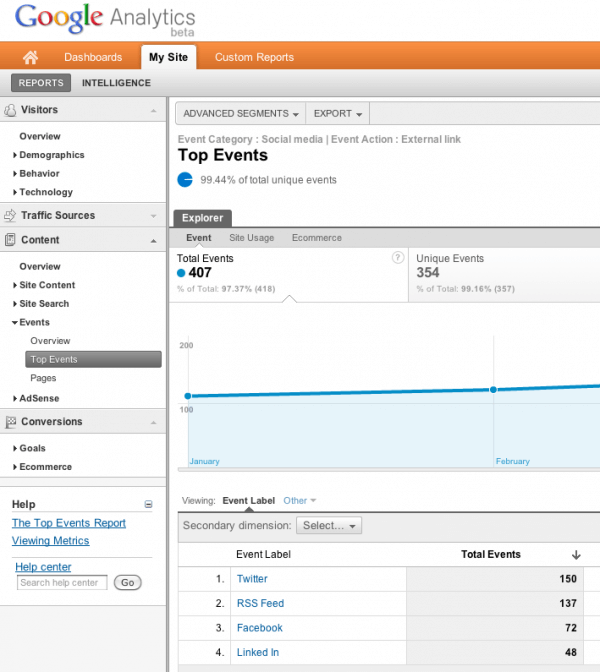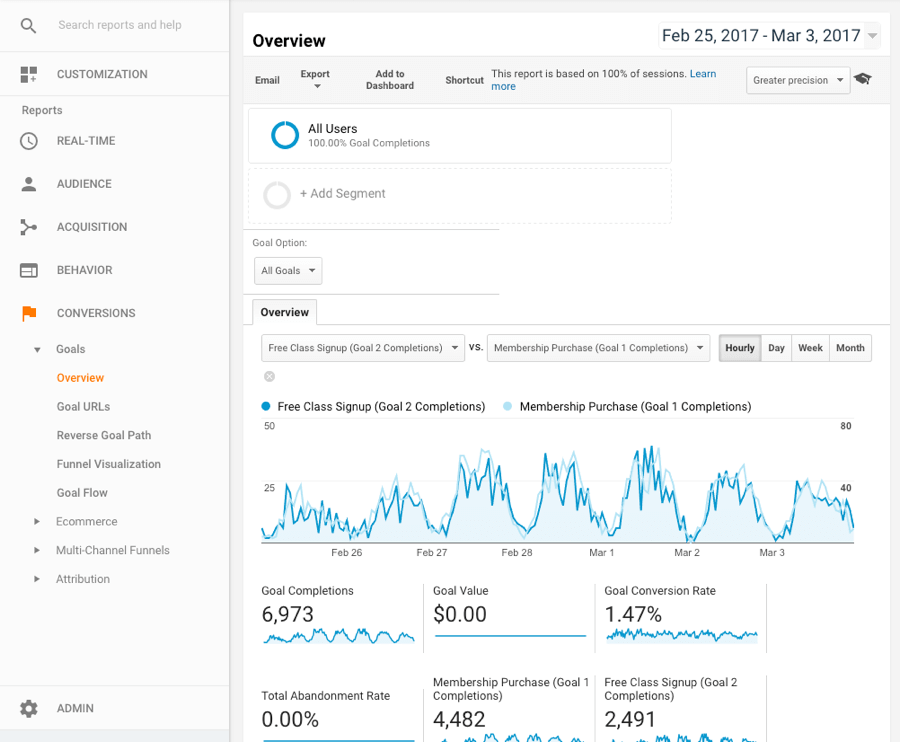Discover the Limitations of Google Analytics Goals: Unveiling the Data Types That Remain Untrackable
As companies increasingly depend on data-driven decision-making, understanding the constraints of devices like Google Analytics becomes extremely important. While Google Analytics Goals offer useful insights into user communications, there exist data kinds that thwart monitoring, posturing challenges to a detailed understanding of customer actions. These untrackable information kinds increase concerns regarding the accuracy and efficiency of the analytics data that companies greatly depend upon for their digital techniques. Interested to reveal the surprise dead spots in your data analysis process?
Incomplete Customer Journey Tracking
Incomplete user trip monitoring within Google Analytics can hinder the ability to properly examine customer behavior. When the individual journey is not fully tracked, there are voids in the information that stop a thorough understanding of exactly how customers connect with a website. This lack of insight can bring about missed out on opportunities for optimization and enhancements to the customer experience.
One usual concern with incomplete customer trip tracking is the failure to see the full path that users take previously finishing a goal or leaving the site. Without this information, it is testing to determine where customers may be experiencing barriers or friction points that avoid them from transforming. Furthermore, incomplete monitoring can obscure the effect of specific advertising and marketing initiatives or website adjustments on user actions.
To resolve this constraint, it is crucial to establish proper monitoring devices within Google Analytics to catch the entire user journey. This may include establishing occasion monitoring, objective funnels, or using tools like Google Tag Supervisor to guarantee that no crucial communications go unrecorded. By obtaining a comprehensive sight of the individual trip, website owners can make more enlightened choices to improve individual involvement and drive conversions.
Acknowledgment Difficulties
Navigating via attribution difficulties in Google Analytics calls for a comprehensive understanding of just how different touchpoints add to the overall conversion process. Attribution difficulties occur from the complexity of contemporary customer trips, where users communicate with multiple channels before converting.
One common acknowledgment difficulty is the trouble in connecting conversions to the proper source, specifically in cases where individuals communicate with numerous networks before converting. This can result in mistakes in determining which advertising initiatives are driving one of the most conversions. Furthermore, cross-device monitoring presents an additional acknowledgment obstacle, as individuals often switch in between devices during their journey, making it challenging to track their interactions perfectly. Marketing professionals have to very carefully analyze and interpret attribution data to make informed decisions and enhance their advertising approaches successfully.
Offline Conversions
Provided the obstacles related to connecting conversions properly in online channels, the dimension of offline conversions provides a considerable chance for marketing professionals looking for an extra detailed understanding of their customers' trip. Offline conversions describe activities that customers absorb the real world, such as making purchases in brick-and-mortar shops or over the phone, going to events, or involving with printed materials - what data is google analytics goals unable to track. These conversions are essential for services that operate both online and offline, as see here now they give useful understandings into the effectiveness of marketing campaigns across different touchpoints
Tracking offline conversions typically postured a substantial difficulty for marketing experts, as it was challenging to connect these actions back to details on-line interactions accurately. With innovations in innovation, such as the integration of CRM systems, distinct identifiers, and promo code codes, companies can currently connect the void in between online and offline data to acquire a much more alternative sight of client behavior. By properly gauging offline conversions, marketing professionals can enhance their approaches, allocate sources a lot more efficiently, and inevitably improve the total customer experience.
Cross-Device Tracking
Cross-device tracking plays a vital duty in recognizing the interconnected nature of customers' electronic interactions throughout several devices. In today's omnichannel world, where users effortlessly switch in between tablets, desktop computers, and smartphones, tracking their habits throughout these tools is essential for marketing experts to obtain a thorough sight of their client journey.

Moreover, personal privacy concerns and regulations such as GDPR and CCPA have additionally difficult cross-device monitoring. With users requiring more control over their data and enhanced restrictions on monitoring innovations, marketers must discover privacy-compliant and innovative ways to link individual communications throughout tools.
Dynamic Web Content Involvement
Recognizing user engagement with vibrant web content is essential in enhancing electronic advertising and marketing approaches for boosted target market communication. Dynamic material refers to website elements that change based upon user habits, preferences, or other variables, using a customized experience. Tracking individual communications with dynamic content presents difficulties for traditional analytics devices like Google Analytics.
While Google Analytics can track fundamental communications like clicks Clicking Here and page sights, it may have a hard time to catch more nuanced involvements within dynamic content. what data is google analytics goals unable to track. Metrics such as time spent on details dynamic components, float actions, or communications within pop-ups are typically not easily quantifiable utilizing standard monitoring approaches. This limitation prevents marketing professionals' capability to totally grasp just how customers are engaging with dynamic web content and customize their strategies accordingly

Conclusion
To conclude, Google Analytics goals have restrictions in tracking insufficient customer trips, connecting conversions accurately, catching offline conversions, tracking cross-device interactions, and determining dynamic material interaction. These restrictions highlight the relevance of exploring additional tracking approaches and tools to gain a much more extensive understanding of individual actions and conversions past what Google Analytics can give.
While Google Analytics Goals deal beneficial understandings right into customer communications, there exist data types that elude monitoring, positioning obstacles to a comprehensive understanding of user actions.Insufficient customer trip tracking within Google Analytics can hinder the capability to properly assess individual behavior. When the user journey is not fully tracked, there are gaps in the information that stop a thorough understanding of exactly how individuals connect with an internet site.One usual issue with insufficient customer trip monitoring is the failure to see the full path that users take in the past completing a goal or leaving the site. By obtaining a thorough sight of the customer trip, web site owners can make even more informed decisions to boost user involvement and drive conversions.
Comments on “What Data Is Google Analytics Goals Unable to Track and Why”